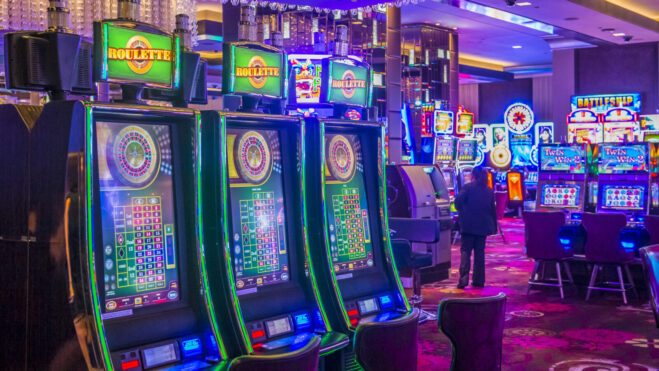The Psychology Behind Engaging Gamblers With Casino Design, Slots, And Table Games
The games provide an escape, whether through the illusion of complexity or appeals to pattern-seeking or problem solving.
4 min

A gambler accepts the role randomness will play in any session. But a casino designer or game designer falls on the opposite side of the spectrum, seeking to craft predetermined boundaries within a universe of chance.
Their goal is to make customers feel comfortable gambling — even if philosophies on how best to do that vary.
“There are no secret or hidden details about casino marketing manipulating players,” noted casino designer and consultant Bill Friedman told Casino Reports. “When it comes to casino design, it can draw gamblers in to play or push them away, but it does not hold them longer. It is the gambling experience that does that, especially winning or losing.”
Friedman’s classic design philosophy included low ceilings, windowless rooms, and maze-like floor layout. This created an intimate space where gamblers could focus their entire attention on gambling rather than the surroundings. As Friedman explained, the slot machines were the decorations.
Roger Thomas adopted opposite practices. Thomas designed the Bellagio with high ceilings and opulent decoration, layered with a wide variety of themes, colors, and surprising influences.
Understanding how these two designers approached casinos is the first step to understanding how casinos seek to be inviting to customers.
Diverging approaches
Thomas’ design methods appeal to a different group of customers than Friedman’s. As Friedman, whose design principles are aimed at maximizing gambling revenue, wrote in an email to Casino Reports:
“Serious gamblers are typically emotionally distant from other people, even their family members, but they enjoy having people physically around them. Today, many are driven away by the casinos to their home to gamble on their computers or smartphones, because today’s casino interior designs and lighting are so offensive to them. They would rather be alone, and lonely, at home than be exposed to these distasteful interiors.”
In his book Resort Style, Thomas recounted his thoughts while designing the Bellagio. He took the opposite approach of classical casino design, including small spaces and placing “gambling equipment immediately inside casino entrances.”
With Thomas’ designs, the Bellagio generated “the largest profits for a single property in Las Vegas history,” he wrote, and it was also “the first Las Vegas resort in which non-gaming revenue surpassed gaming revenue.”
The shift was away from gambling as the primary focus, and it showed and continues to show in slots occupancy in many Vegas resorts.
“For the three decades since Summa Corporation had to exit the casino business,” Friedman noted, “I have taken potential casino consulting clients on a three-hour walking tour of four of the most famous casinos on the Las Vegas Strip.
“I only conducted these tours on evenings, when the city’s hotel rooms were sold out, so the casinos had maximum play. I started the tour by telling the prospective clients that if these four casinos had a combined total slot machine occupancy of 5 percent or more not to hire me. I have literally worked for casinos all over the world, because these four Strip casinos never once reached 5 percent slot occupancy on any of my many tours.”
‘The game is inside of the gambler’
Slot machines do remain popular in many casinos, of course, and there is much to understand about what keeps slots players’ attention on the machines instead of the amenities.
“The game is inside of the gambler, not in the slot,” slots designer Mike Tamm said.
At a glance, a slot machine is a lever to pull or a button to press. It’s also a simple way to play on our emotions. Concordia University Assistant Professor of Psychology Mike Robinson conducted research suggesting that humans are hardwired to both seek and resolve uncertainty. Slot machines are easy ways to ride the highs and lows of winning, losing, and almost winning.
Slots also appeal to our innate need to find patterns. Gambling can mimic the feeling of solving a difficult problem, exploring something new, and resolving complexity.
“The advent of multi-line slot machines helps keep our brain somewhat confused while giving it this impression that it’s figuring out a pattern, and our brain is there to try and recognize patterns, and we’ll try and find patterns even when they’re not there,” Robinson said.

Slots and the illusion of strategy
It takes more than a matching line of symbols, though, to make a great slot game. And there has to be an evolution.
“For 100 years fruits were symbols of gambling,” Tamm said. “But if you have fruits, you know you have played slots before with fruits and you have lost a lot of money. And this blocks the feeling of the aspiration.”
That subconscious recoil from familiar sources of loss is why there are so many variations on slot games. Every new theme, matching technique, and illusion of strategy makes the slot seem like a new game that offers gamblers a chance to win.
The chance of winning is another major part of a slot machine’s appeal. It has to pay money out often enough for players to feel like they have a chance.
“Many slots on the market break this rule,” Tamm said. “They think about the operators and casino, and so they try to give the gamblers suggestions to play and play and play. And at the end, they play the slot 10 times and they never win much money.”
Table talk
Like slots, there’s much strategy under the surface when it comes to designing table games.
While slots are easy to play and require little effort, table games can demand more cognitive work. Still, many of the same things that draw people to slot machines draw others to roulette, blackjack, and craps.
James Whelan, founding director of the Gambling Clinic, found that there was a continuum of cognitive load across games. In slots, it’s low. In craps, it’s wise to get a tutorial or to read a book on strategy before attempting to play. Different levels of effort appeal to different people.
Table games also have a social element that set them apart from slots. Whelan said craps is “all about the excitement of the table.” He went on to explain that blackjack is a smaller group, and slots make up the solitary end of the spectrum. Whelan’s analysis of blackjack says a lot about not only the gambler, but also the dealer:
“People are oftentimes afraid of blackjack because they’re not sure they understand the game, which is why if you sit at a blackjack table, they’re going to teach you the game. They teach you the game because they want you to enjoy the game. The dealer actually wants you to do well, because you’re going to tip them.”

Casinos, gambling, and entertainment work together
Most casinos aren’t just for gambling. A walk through a casino can include a trip to a bar, restaurant, shop, or live show. They’re entertainment centers that cater to many different risk tolerances and customer interests.
Casinos may draw people toward or away from their gambling offerings, but the games themselves are intended to keep people gambling. The games provide an escape, whether through the illusion of complexity or appeals to pattern-seeking or problem solving.
Casinos are ecosystems with many interdependent parts. How much of an emphasis any individual property places on gambling is a matter of philosophy and design.




